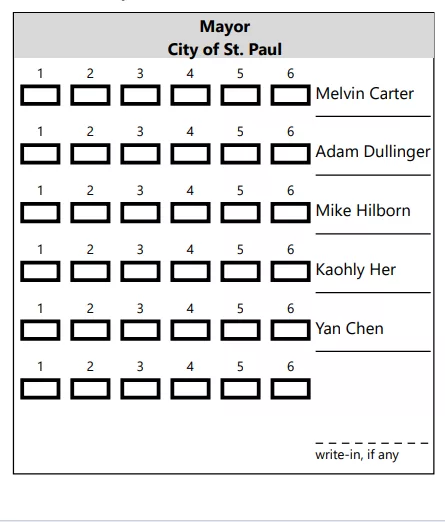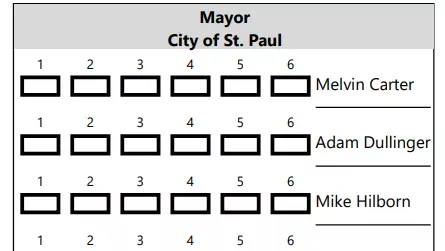In a few days we are at the polls in St. Paul. You ask “An election? What are we voting for now?” Excellent question. This ballot may have city, school board, and local ballot questions. Check your precinct for what is on your ballot. While these off-year elections don’t get the hubbub of elections like presidential years, they are still important. These elections shape your community.
On your way to the polls, you have some idea of the candidates and are mulling over your choices. You feel prepared. You walk in, get your ballot, and pen readied, aim for that first box to start marking it…. but wait, there is not just one box but several. Which one do you choose? You inquire and are told this election uses Ranked Choice Voting. GULP! After a brief tutorial, you persevere and vote, but you are curious about that process.
I had the same question for years and I’m an election judge. To help myself and other confused voters, here is some history on Ranked Choice Voting, why it’s used in St. Paul, and what to do at the polls.
History of Ranked Choice Voting (RCV)
Ranked Choice Voting is based on the Single Transferable Vote Electoral System, developed by Thomas Wright Hill in 1819. It allows voters to rank multiple candidates for the same office in order of preference. Many states (including Minnesota) use this means of voting in state and local elections. St. Paul voters have used this method for city elections since 2011, but it is not used for state or national elections.
How it Works
Voters rank multiple candidates for one office in order of preference, from the top choice to their last choice, i.e.: first choice, second choice, third choice, etc.
- A candidate needs a majority (50% plus one) of the votes to win.
- If a candidate receives the absolute majority of the first choice votes they win the election.
- If a candidate doesn’t receive more than 50% of the first choice ballots, the candidates who have the lowest percentage of votes and mathematically cannot reach 50% are eliminated. These ballots will be reallocated to the voters’ second choices.
- The process continues until one candidate reaches more than 50% of the votes.
On your Ballot
Voters must rank candidates only once, second, third or greater ranked votes are optional. This means, if there is only one person who you want to cast a vote to elect, you only have to vote for that one, but if you like another candidate almost as much as your first choice, you can list them second.
Fill in the square for each candidate you wish to vote for in order of preference.
Example of a ranked voting ballot

You are now an RCV expert. You can vote at the November 4th election with confidence. Don’t forget to share this knowledge with friends, family, and co-workers.
See you at the polls!








Leave a Reply